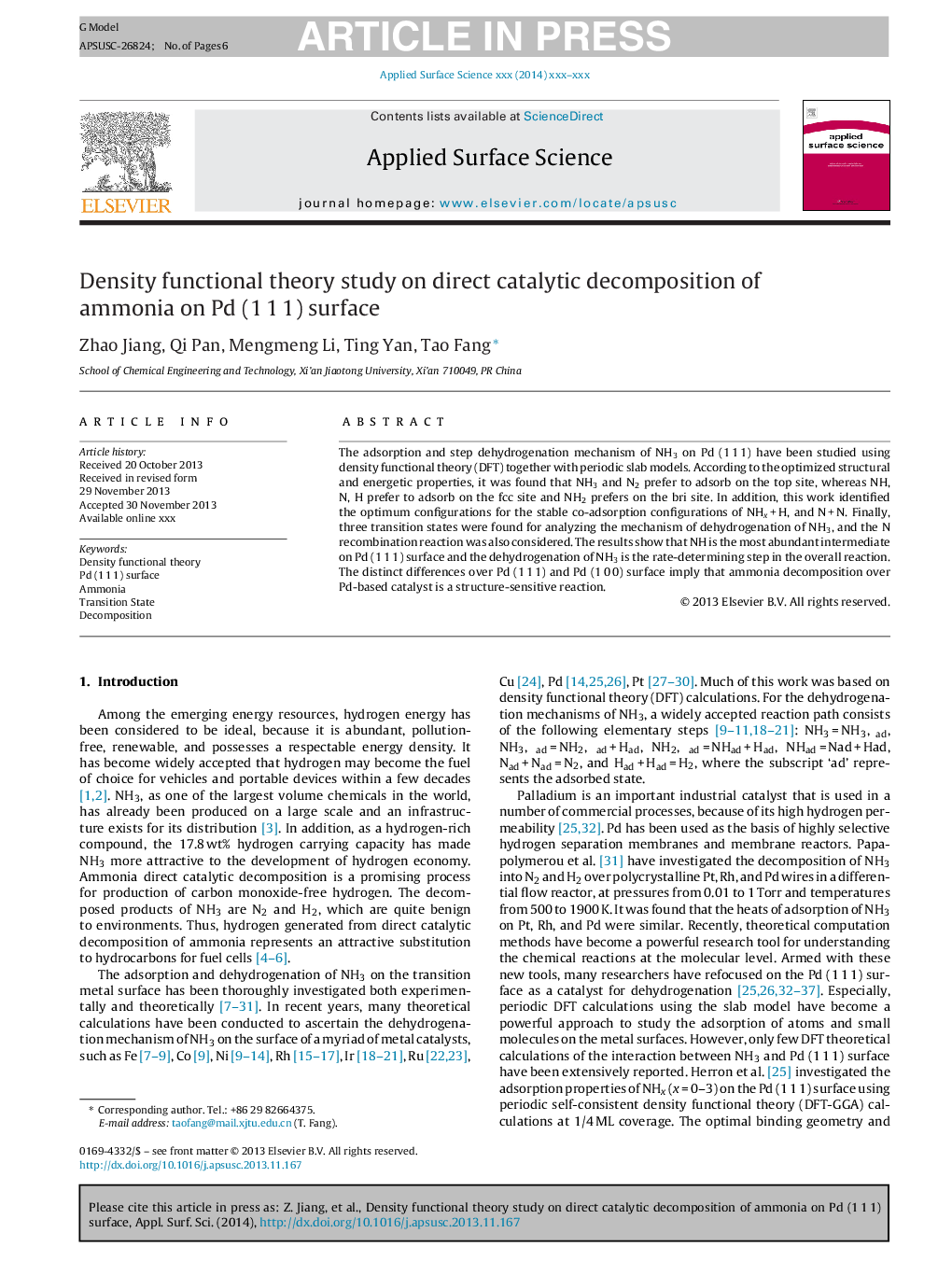| Article ID | Journal | Published Year | Pages | File Type |
|---|---|---|---|---|
| 5353379 | Applied Surface Science | 2014 | 6 Pages |
Abstract
The adsorption and step dehydrogenation mechanism of NH3 on Pd (1 1 1) have been studied using density functional theory (DFT) together with periodic slab models. According to the optimized structural and energetic properties, it was found that NH3 and N2 prefer to adsorb on the top site, whereas NH, N, H prefer to adsorb on the fcc site and NH2 prefers on the bri site. In addition, this work identified the optimum configurations for the stable co-adsorption configurations of NHx + H, and N + N. Finally, three transition states were found for analyzing the mechanism of dehydrogenation of NH3, and the N recombination reaction was also considered. The results show that NH is the most abundant intermediate on Pd (1 1 1) surface and the dehydrogenation of NH3 is the rate-determining step in the overall reaction. The distinct differences over Pd (1 1 1) and Pd (1 0 0) surface imply that ammonia decomposition over Pd-based catalyst is a structure-sensitive reaction.
Related Topics
Physical Sciences and Engineering
Chemistry
Physical and Theoretical Chemistry
Authors
Zhao Jiang, Qi Pan, Mengmeng Li, Ting Yan, Tao Fang,
